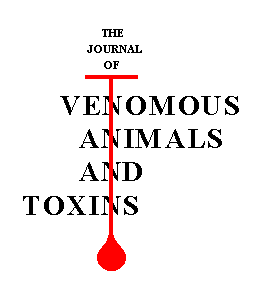Cassava is a widely grown root crop which accumulates two cyanogenic glucosides, linamarin and lotaustralin. Linamarin accounts for more than 80% of the cassava cyanogenic glucosides. It is a ß-glucoside of acetone cyanohydrin and ethyl-methyl-ketone-cyanohydrin. Linamarin ß-linkage can only be broken under high pressure, high temperature and use of mineral acids, while its enzymatic break occurs easily. Linamarase, an endogenous cassava enzyme, can break this ß-linkage. The enzymatic reaction occurs under optimum conditions at 25ºC, at pH 5.5 to 6.0. Linamarin is present in all parts of the cassava plant, being more concentrated on the root and leaves. If the enzyme and substrate are joined, a good detoxification can occur. All the cassava plant species are known to contain cyanide. Toxicity caused by free cyanide (CN¯) has already been reported, while toxicity caused by glucoside has not. The lethal dose of CN¯ is 1 mg/kg of live weight; hence, cassava root classification into toxic and non-toxic depending on the amount of cyanide in the root. Should the cyanide content be high enough to exceed such a dose, the root is regarded as toxic. Values from 15 to 400 ppm (mg CN¯/kg of fresh weight) of hydrocyanic acid in cassava roots have been mentioned in the literature. However, more frequent values in the interval 30 to 150 ppm have been observed. Processed cassava food consumed in Brazil is safe in regard to cyanide toxicity.
cyanide; cassava; linamarin; cyanogenic glucoside; residues; waste water; culinary and industrial uses





